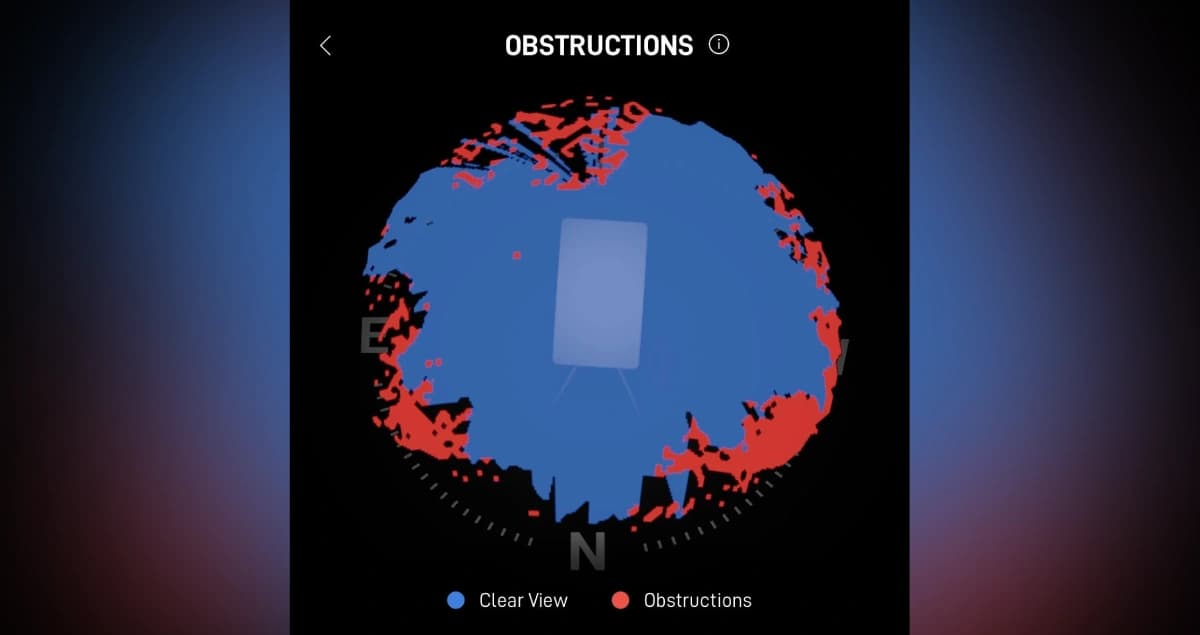Starlink Obstructions: Understanding and Overcoming Challenges
Savio

What is Obstruction in Starlink?
Obstruction, in the context of Starlink, refers to any physical object or environmental condition that blocks or interferes with the line of sight between the Starlink dish and the satellites. This line of sight is crucial for maintaining a strong, stable connection. When the line of sight is obstructed, users may experience slower internet speeds, increased latency, or even complete service interruptions.
Types of Obstructions Impacting Starlink
Natural Obstructions
Natural elements are among the most common sources of obstruction for Starlink. Trees, especially tall or dense ones, can significantly block signals. Similarly, the terrain, such as hills or mountains, can pose a challenge by obstructing the direct line of sight needed for optimal performance. Weather conditions also play a role—heavy rain, snow, or dense cloud cover can temporarily degrade the signal.
Man-Made Obstructions
In urban or suburban areas, man-made structures are a significant source of obstruction. Buildings, especially tall ones, can block the satellite signal, leading to reduced performance. Other infrastructure, like power lines or tall fences, can also interfere with the signal, particularly when the dish is installed at a low height or in a less-than-ideal location.
Moving Obstructions
Unlike fixed objects, moving obstructions such as birds, airplanes, or even large vehicles can momentarily disrupt the Starlink signal. While these interruptions are usually brief, they can cause noticeable drops in performance, particularly during activities requiring a consistent connection, like video calls or online gaming.
Why Obstruction is a Critical Issue for Starlink Users
Obstruction is more than just a minor inconvenience—it can drastically affect the quality of your Starlink service. A clear line of sight is essential for maintaining low latency and high download speeds. Even partial obstructions can lead to slower speeds, buffering issues, and service interruptions. For users who rely on Starlink for work, education, or entertainment, these issues can be particularly frustrating.
Identifying and Diagnosing Obstruction Issues
The first step in addressing obstruction is identifying it. Starlink provides a mobile app that can help users detect obstructions by scanning the surrounding area where the dish is installed. This tool is incredibly useful for ensuring that your dish has the clearest possible view of the sky.
Physical inspection is another method—walk around the installation site and look for potential obstructions like trees, buildings, or power lines. Common symptoms of obstruction-related problems include intermittent connectivity, fluctuating speeds, and increased latency.
Mitigating Obstruction Issues
Optimizing Dish Placement
One of the most effective ways to mitigate obstruction issues is by optimizing the placement of your Starlink dish. The dish should ideally be placed in an area with a wide-open view of the sky, free from nearby obstructions. Many users find that elevating the dish—by mounting it on a roof, pole, or tower—helps avoid obstructions from trees or buildings.
Clearing Natural Obstructions
If trees or other vegetation are blocking the signal, trimming or pruning them can make a significant difference. In some cases, it might be necessary to modify the landscape, such as removing trees or lowering the height of shrubs, to create a clearer line of sight.
Avoiding Man-Made Obstructions
In urban environments, it’s crucial to place the dish where it’s least likely to be blocked by buildings or other infrastructure. This might mean choosing a location away from tall structures or installing the dish higher up on a pole or rooftop to avoid blockage from nearby objects.
Advanced Solutions for Persistent Obstruction Problems
For those facing persistent obstruction issues, Starlink offers some advanced solutions. The Starlink dish itself is equipped with adjustable features that allow it to find the best possible angle for a clear signal. Additionally, users can explore mesh network solutions that help distribute the internet signal throughout a property, which can be especially useful in areas where complete obstruction removal isn’t possible.
The Role of Starlink’s Software and Firmware Updates
Starlink is continuously evolving, with regular software and firmware updates that help improve obstruction management. These updates enhance the dish's ability to adapt to changing conditions, reducing the impact of minor obstructions. As the technology progresses, users can expect even more sophisticated features to help maintain a strong connection despite potential obstacles.
Starlink's Obstruction Simulation Tool: A Game-Changer
One of the most innovative tools Starlink offers is the Obstruction Simulator, available through the Starlink app. This tool allows users to simulate different installation scenarios, helping them find the optimal location for their dish. By predicting potential obstructions, users can proactively choose the best spot, minimizing the likelihood of future connectivity issues.
Share:

Savio
View ProfileFascinated by the possibilities of Starlink and satellite internet. Always down to chat disruption, download speeds, and the future of staying connected. 🚀🛰️📡
